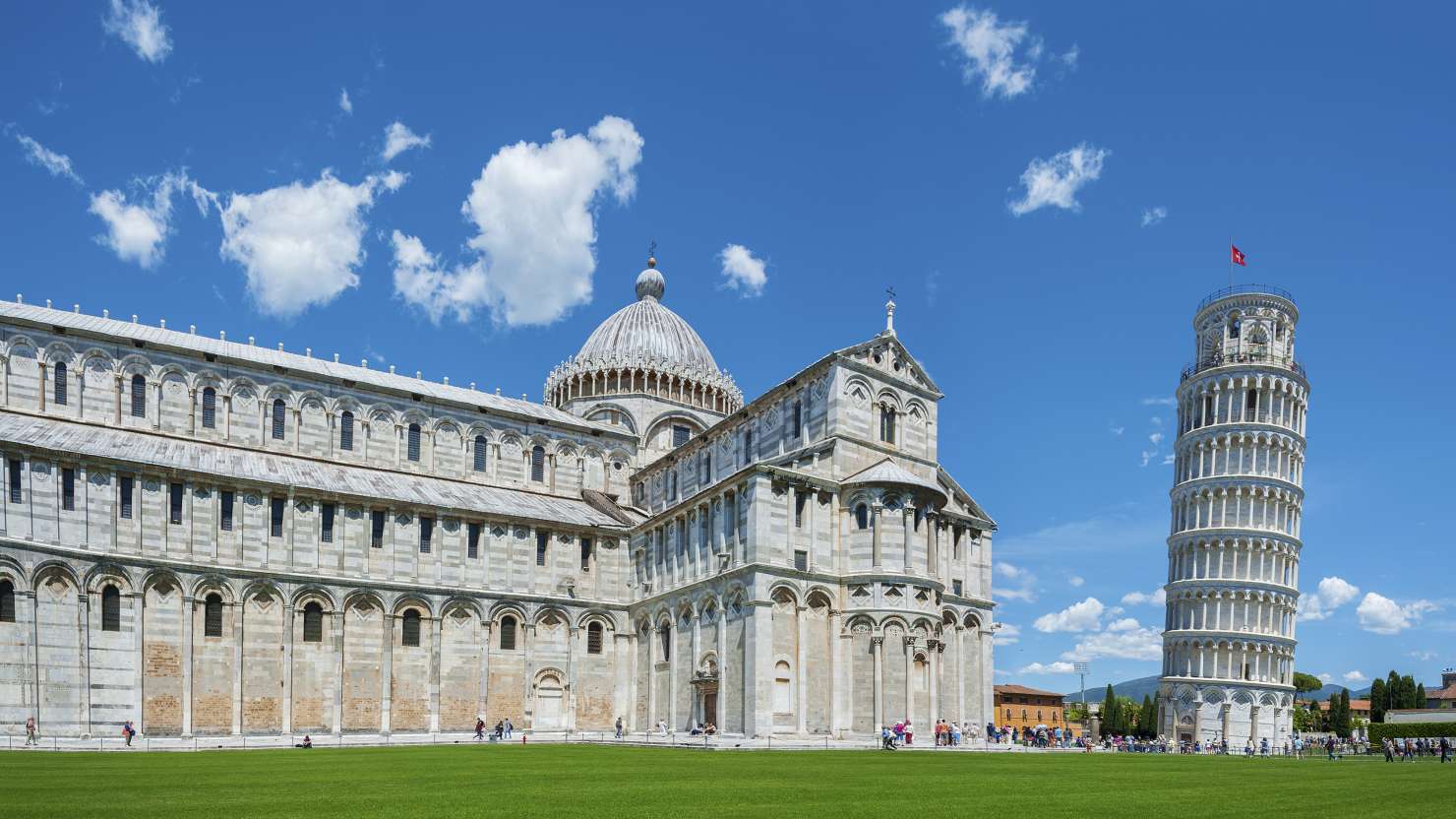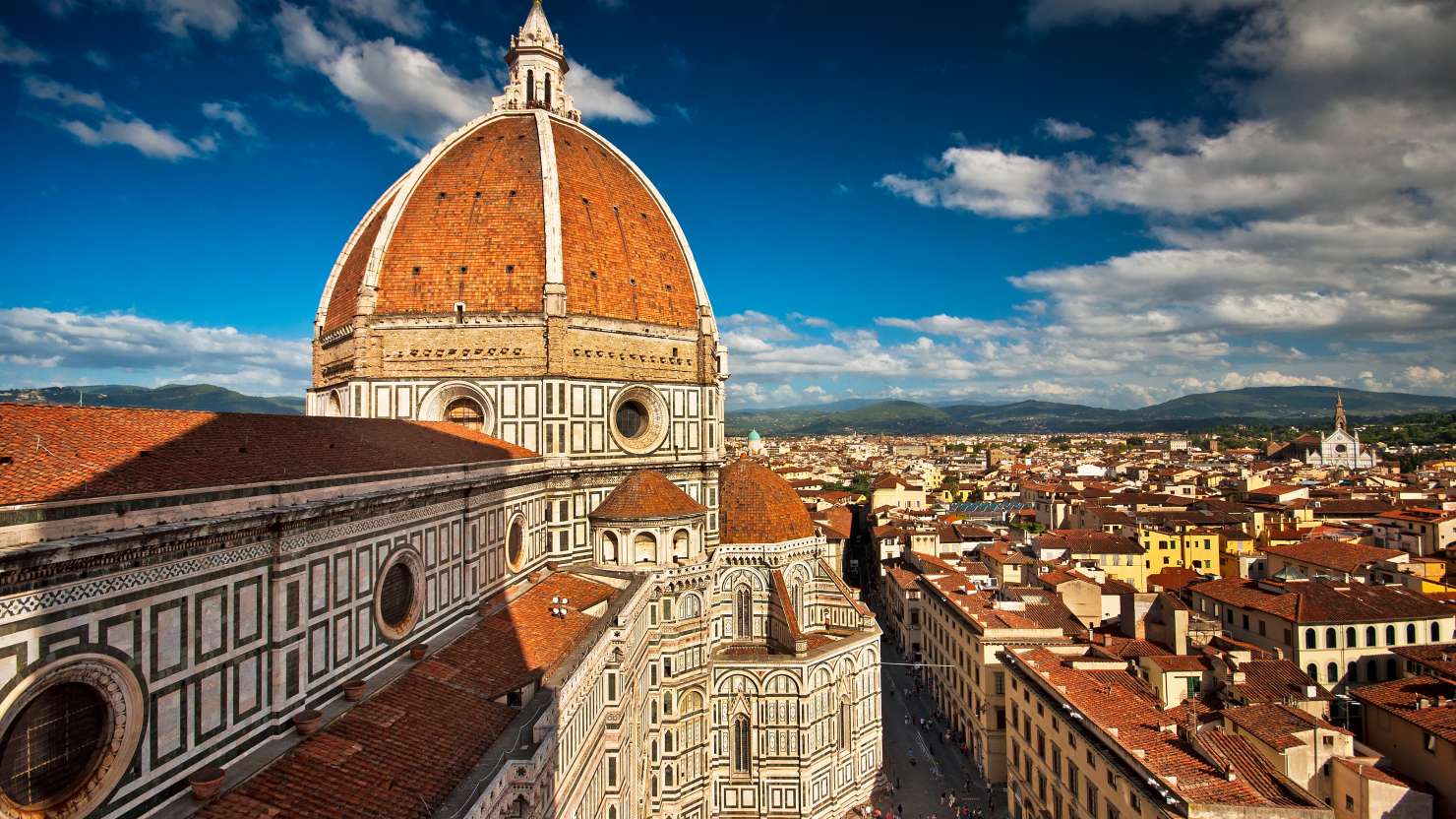Top things to do in Valletta
Explore more on the Mediterranean

The west coast of Italy is so awash with sites of historical significance and must-see works of genius, it can be hard to know where to start. There may be more to cover than it seems possible in a lifetime, but a western Med cruise holiday provides the opportunity to visit some of the most famous and renowned historical sites in the world.
The Tuscan city of Pisa (from Livorno or La Spezia) is most famous for its leaning bell tower. But look closely at one of its neighbours on the immaculate green lawns of the Piazza dei Miracoli (Field of Miracles) – the cupcake-shaped baptistery doesn’t stand straight either, leaning 0.6 degrees towards the cathedral.
One rumour had it that the famous lean of the tower was done purposefully when it was built in the 14th century, so that Pisa could compete with the draw of nearby Florence. But more truth can be found in the origin of the city’s name: Pisa comes from the Greek for ‘marshy land’ – apt as it lies on soft layers of silt and marine clay. The tower started to lean as soon as the third tier was completed because the foundation had difficulty supporting the weight of the building. Work was halted then resumed a century later – you can see that the bell tower is slightly bent where the workmen attempted to correct the incline.
The Piazza dei Miracoli is considered an important centre of European medieval art and, as well as the leaning tower, it is home to three important buildings – making it a must-visit. The Duomo di Pisa (Pisa Cathedral) was built in the 11th century and is considered a masterpiece of the Pisan Romanesque era. The Battistero di Pisa (Baptistery of Pisa) is one of the tallest religious buildings in Pisa, and legend goes that the Camposanto Monumentale (Monumental Cemetery) was built on soil brought from Golgotha (a site located outside the walls of Jerusalem thought to be where Jesus was crucified).

From Livorno or La Spezia, you can also visit the gloriously beautiful city of Florence, the home of Renaissance art and architecture. The city’s most famous sculpture is without a doubt Michelangelo’s masterpiece, the flawless David – a symbol of youthful beauty and strength, brow furrowed, left foot forward, ready to take on Goliath. The 17ft-high marble statue (carved from a single gleaming white block quarried in Carrara) was originally placed in the Piazza della Signoria in front of the fortress-like town hall. It was moved to the Galleria dell’Accademia in 1873 and replaced by a replica – it’s definitely worth venturing to see both when you visit Florence.
This surprisingly small and walkable city is an open-air museum, packed full of an unbelievable amount of treasures. In a single day, you can take in works by famous Renaissance artists such as Michelangelo and Botticelli, walk the beautiful Ponte Vecchio (Old Bridge) – the only bridge across the River Arno until 1218 – to take in views that have hardly changed in 700 years, and climb the modern world’s first dome. Built in 1418 by Filippo Brunelleschi, the dome of the Cattedrale di Santa Maria del Fiore was built without scaffolding and remains the largest masonry dome ever constructed. Climbing the 463 steps to the top offers the most incredible views of this Renaissance city.

Rome (from Civitavecchia) will make your head spin. So much to see and do, you may just want to sit down and eat ice cream while the eternal city whirls about you. Famous for its ancient sites, powerful history, delicious food and world-class art, the vibrant city of Rome has inspired visitors for thousands of years. Its 3,000-year history comes to life in a single glance. Ancient buildings such as the Colosseum, Roman Forum and Pantheon are testament to the city’s time as capital of the Roman world, and sit side by side with beautiful Renaissance architecture such as the Vatican City, and ornate Baroque fountains, frescos and squares.
On a trip to Rome you must visit the Vatican City, toss a coin in the Trevi Fountain (said to guarantee your return to the city), sit on the Spanish Steps, wander the Pantheon – one of the best-preserved ancient Roman buildings – and be amazed by the Sistine Chapel, home to Michelangelo’s masterpieces. But no trip to Italy’s capital is complete without a visit to the Colosseum.
The biggest Roman amphitheatre in the world, the Colosseum was built between AD 72 and 80 as an entertainment complex for the masses. Its interior divided into three parts: the first is the arena, with its trapdoors down to the hypogeum, full of cages and elaborate pulley systems for the battle sets (the worst – or best, depending on your leanings – spectacle was a 117-day blood-fest involving 9,000 gladiators and 10,000 animals, hosted by the emperor Trajan). The cavea was the seating area: plebs and women at the top, wealthy citizens in the middle and officials on the lower tier. The podium was the terrace reserved for emperors and other VIPs. Over all were masts supporting a vast canvas awning, protecting Roman heads from the sun and rain.

The island of Elba lies 10km off the Tuscan coast and, though relatively unknown to many tourists, is the third largest Italian island after Sicily and Sardinia. An idyllic retreat with its crystal-clear waters, rocky cliffs, pine-clad mountains and golden sands, it is most famous for harbouring French Emperor Napoleon Bonaparte for 300 days during his exile from France in 1814.
Given rule over the island and its 110,000 inhabitants, Napoleon was received by the locals with great enthusiasm. He set about overhauling the legal and education systems and instigating public works, making improvements to public hygiene and ensuring the construction of new roads. His most noticeable legacy for tourists, however, is the lovely Villa dei Mulini, which served as his home while banished from France. It has a delightful terraced garden with magnificent views over the bay, and a copy of the famous painting by Jacques-Louis David, Napoleon at the Saint-Bernard Pass.

In AD 79, one of the most catastrophic volcanic eruptions in European history took place in Italy. Spewing a deadly combination of molten rock, pumice, volcanic gas, ash and stones, Mount Vesuvius’ eruption buried several Roman settlements in just 24 hours, most notably the cities of Pompeii and Herculaneum.
With thick layers of ash covering the two towns, their names and locations were forgotten, frozen in time until their discoveries in the 18th century. In 1738 Herculaneum was rediscovered by workmen digging for the foundations of a summer palace for the King of Naples, Charles of Bourbon, and 10 years later Pompeii was rediscovered as the result of intentional excavations by the Spanish military engineer, Rocque Joaquin de Alcubierre. Both preserved cities provide a unique snapshot of ancient life in a Roman city.

of
Don’t miss out! Sign up for latest news, offers and competitions from P&O Cruises.